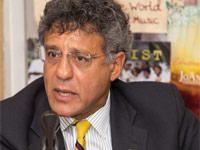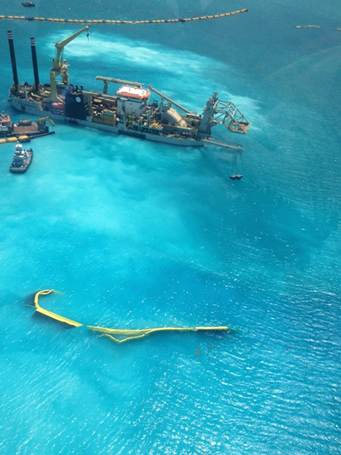Nassau, The Bahamas – Evaluating environmental stress recovery and the condition of the nation’s coral reef systems is the agenda of the Khaled bin Sultan’s Living Oceans Foundation’s oceanography researchers. They will be in The Bahamas until 2012 on board the M/Y Golden Shadow oceanography reconnaissance ocean liner.
“During the next five years, we will be looking at coral reefs around the world. Our three main objectives are to map the shallow coral reef ecosystems and the associated habitats to characterise the organisms that you find in those habitats and to evaluate the condition in particular of the coral reefs,” said Dr. Andy Bruckner, chief scientist of the Khaled bin Sultan Living Oceans Foundation.
“Our habitat maps that we create provide a tool that managers can use for what is known as marine spatial planning. They will identify not just the coral reefs, but all of the shallow marine habitats that are associated with coral reefs and that are very critical to the health of those coral reefs.”
Dr. Bruckner explained that all habitats, like mangrove ecosystems, the shallow grass beds, reef flat and shallow reef communities colonised by macro algae, and some of the sandy environments play a role in the survival of healthy coral reefs.
He said the same mangroves provide nurseries for many fish that spend their adult life on the reef and all the habitats need to be intact to ensure that coral reefs are healthy and can survive.
“By using satellite imagery, we are able to take that imagery and navigate through these different habitat types and do some very simple, but highly technical ‘ground truthing’, which involves collecting information on things like the depth or the bethimagery of the area, what the bottom characteristics are like, what organism occur in those areas,” said Dr. Bruckner.
The information allows researchers to create a geo-reference and subdivide a region into different habitat types for setting up marine protected areas (MPAs). It is essential for identifying the location of coral reefs, and the different environments present within that reef, as well as how they are linked to some other habitats, to the mangroves, to the grass beds and how one coral reef is connected to another coral reef.
“You know exactly where on Earth each one of these habitats are located, you can use these maps to delineate particular areas that you want for marine conservation”, said Dr. Bruckner.
“Once we create these habitat maps, one other component is to survey the representative coral reef ecosystems within that area. We conduct assessments which will tell us what corals are in there, how abundant those corals are, how much of the bottom they make up, and how well they’re doing.”
Researchers can determine the sizes, condition, and stressors of the corals such as coral diseases, and how many new corals are coming into the system to replace corals that died. “Something known as recruitment is a very, very important component in these surveys, looking at what new corals have settled, and whether those corals are able to survive and repopulate a reef,” said Dr. Bruckner.
Scientists are also looking at both biological and physical factors that control the health and the resilience of the ecosystem. The coral community can be affected by acute disturbances like a hurricane that goes through an area or an unusual temperature event that causes the corals to bleach.
These processes and interactions among the different organisms on the coral reef will also be studied to understand mitigation strategies. It helps them determine how likely that system is to rebound from localised threats of human impact like overfishing, or using destructive fishing gear, and sediment that flows off the land.
“If the system is affected by some of those, many of the corals may die, but what we want to know is whether those systems are likely to rebound in a relatively quick time and what sort of things we can do to make sure that they do rebound, and to speed up that process,” said Dr. Bruckner.
Dr. Bruckner has been with the Living Oceans Foundation for the last three years. He came from the National Oceanic and Atmospheric Association (NOAA), where he worked on their coral reef conservation programme.
By Gena Gibbs
BAHAMAS INFORMATION SERVICES



